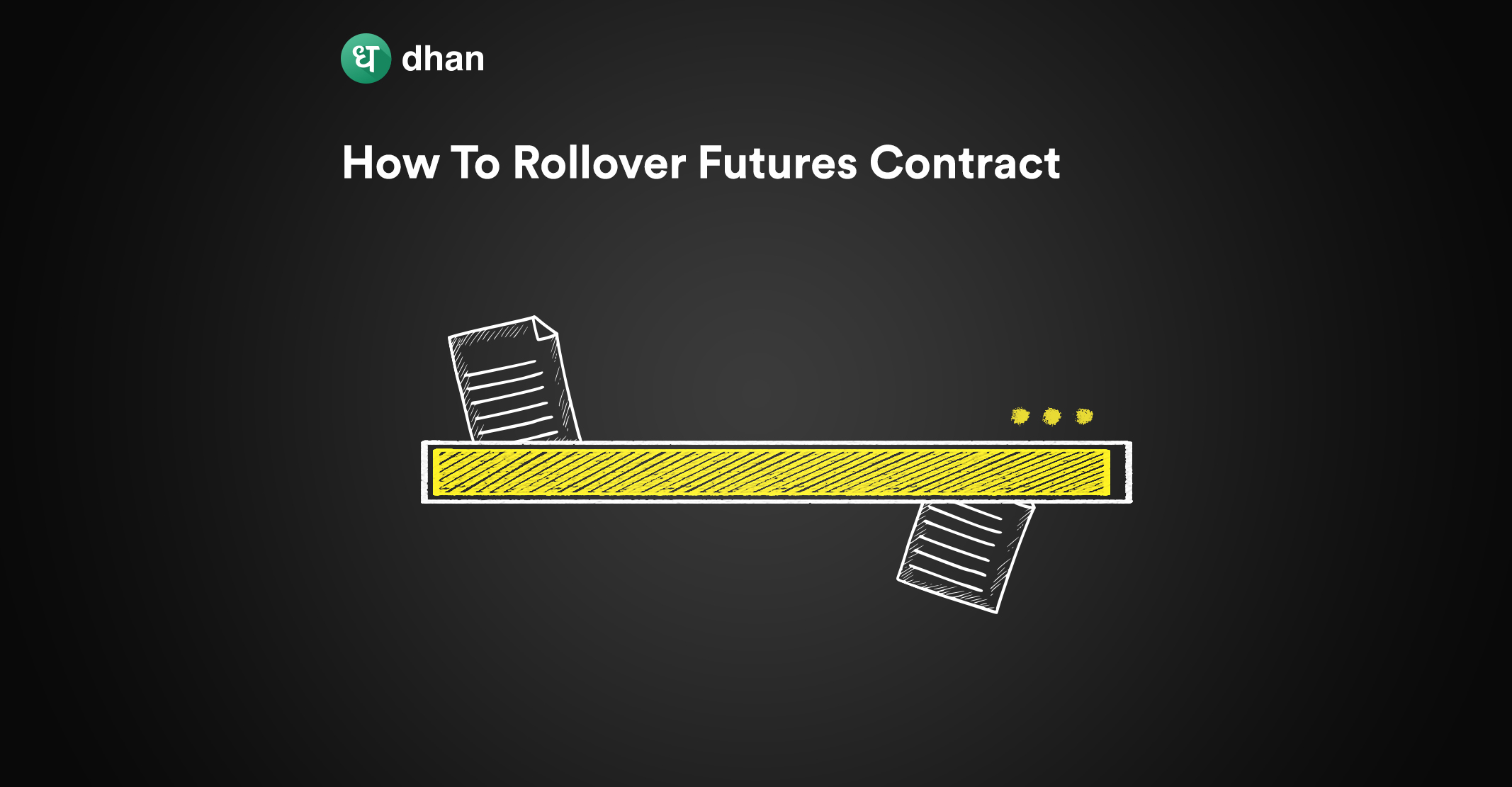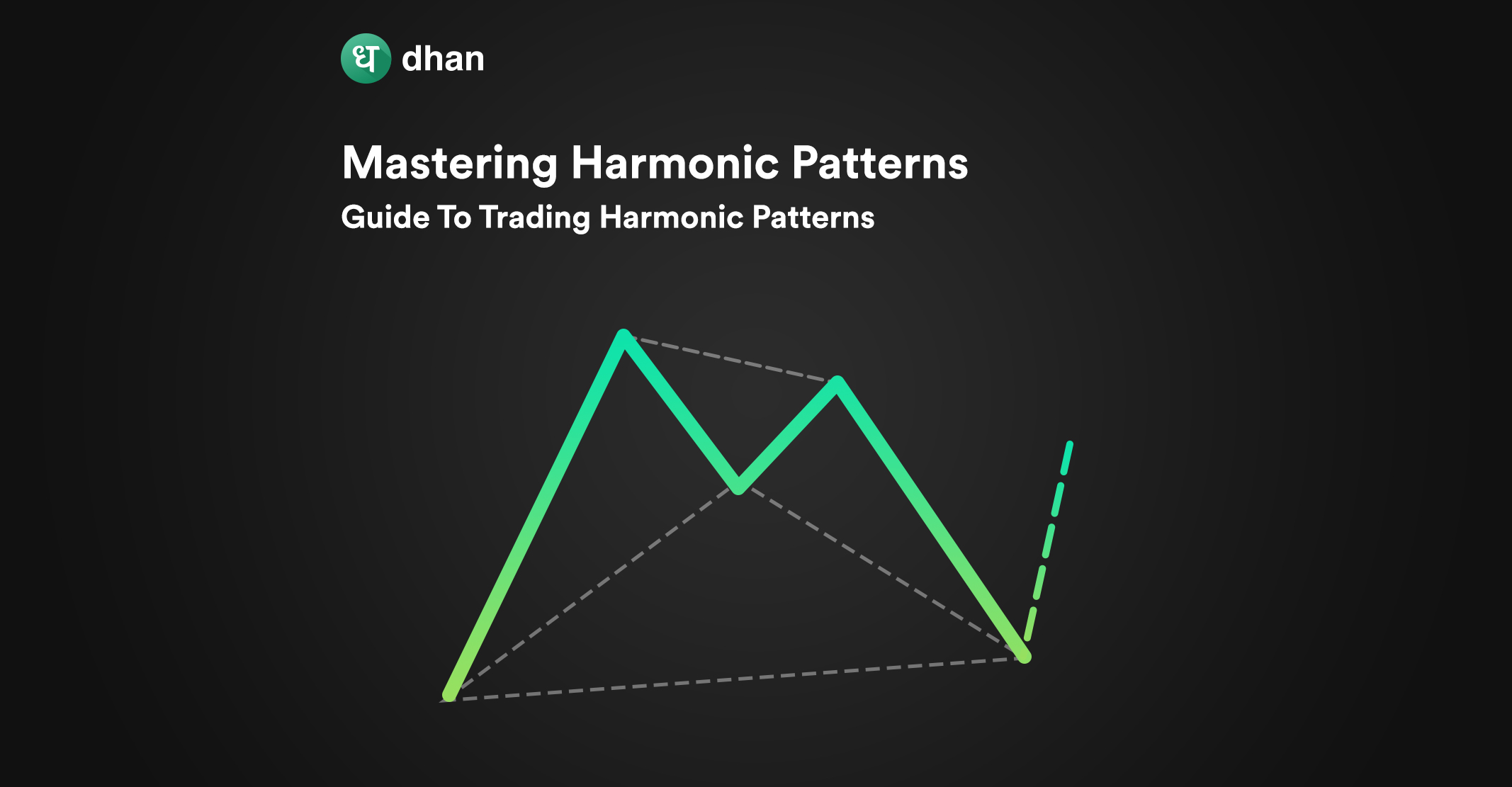Rollover in futures trading is a concept that can help you manage your risk and overall positions. We’ll walk you through the entire process of rolling over a futures contract in this blog!
What is Rollover in Futures Trading?
Rollover in futures trading is the act of squaring off a position in a near-month futures contract and opening a similar position in a far-month contract for the same underlying and lot size.
Traders do so by going long or short based on their outlook and goals. If a trader has a bullish outlook, they will typically go long by rolling over the futures contract.
Conversely, if a trader is bearish, they’ll go do a short rollover. On to personas. Hedgers, for example, may rollover their futures position to reduce risk and offset the impact of volatility.
The reason why traders may rollover their futures contract is simple.
They can maintain exposure to the underlying asset while adjusting their position to the evolving market conditions. That said, rolling over futures carries a cost in the form of brokerage, transaction fees, and more.
These costs need to be carefully considered before proceeding to rollover the futures position. Not to forget, the timing of the rollover is key.
You as a trader must strive to strike a balance between rolling over too early (missing short-term gains) and rolling over too late (opening up to long-term volatility).
Futures Rollover Example
Meet Mr. Roel O. Ver. He’s a futures trader who’s known to be the master of the futures rollover.
Mr. Roel O. Over holds a long position in a near-month Nifty 50 futures contract because he’s bullish.
As the contract approaches expiry, he knows it’s time to play the long game. It’s time to roll over the futures contract.
The near-month Nifty 50 futures contract is set to expire in two weeks while the far-month contract will expire in 3 months.
He has the contract set. He also has the right lot size and appropriate position sizing in mind. Let’s not forget that Mr. Roel O. Ver is a very prudent trader, which means he weighs the cost of rolling over futures.
The math suggests that the upside is worth it and now it’s time to manage risk effectively.
Mr. Roel O. Ver sets stop-loss orders to limit potential losses and also considers the use of options to hedge against adverse price movements.
Timing is everything in futures trading. Mr. Roel O. Ver keeps a close eye on market liquidity and upcoming news events.
He plans to execute the rollover at a time when market conditions are favorable and fit his strategy and analysis.
This allows Mr. Roll O. Over to maintain exposure while being prepared for evolving market conditions.
That’s how simple it is to rollover futures on paper. But real life is far from simple. There are multiple factors you need to consider.
Factors to Consider Before a Rollover
Before rolling over a futures contract, there are certain factors you should consider which are as follows:
1. Expiration Date
The expiry date of a new futures contract should be able to match your price analysis of the underlying asset at the right time.
2. Market Liquidity & Open Interest
Market liquidity helps you analyze if futures are relatively easier to sell whereas open interest tells you about the number of open outstanding futures available in the market.
3. Cost of Carry
Cost of carry is a cost that weighs on holding futures till the expiry and it also indicates that there is bullishness on the underlying asset in the market.
4. Trading Strategy
Knowing whether you are risk-averse or a risk-taker is important before rolling because you have to face price volatility in the asset.
5. Margin Requirements
Margin is the amount that you need to deposit to your broker while trading in futures and has to be maintained to certain levels. So, while rolling futures you should be ready to pay the margin for a longer time.
Step-by-Step Guide for Rollover of Futures Contracts
Rolling a futures contract requires proper analysis in order to take the correct position and let’s see how to rollover futures contract:
1. Review the Current Contract Details
The first step is to review your current futures contract details such as underlying asset, lot size, expiry date, etc.
Suppose you are holding 100 lots of XYZ futures that are going to expire in the coming month wherein you have to buy the stocks.
2. Identify the Next Contract Month
Next is to find another XYZ futures contract that has the same contract size and that matches your expiry date expectations.
3. Evaluate Market Conditions and Trends
If you have analyzed that the price of the underlying stock of the XYZ futures will rise in the future, then with your next month’s expiry contract you can purchase the stocks at a pre-decided price and later sell them in the open market at a higher price.
4. Calculate Rollover Cost and Adjustments
After this, calculate the rollover cost (also mentioned on the stock exchange) that you need to pay along with other adjustments such as brokerage fees, transaction fees, etc.
5. Place Rollover Orders
You can place rollover orders only when it is opened by the stock exchange which is generally one week before the expiry. The settlement is done every month on the last Thursday within trading hours.
6. Monitor and Manage Rollover Positions
Finally, you need to continuously monitor the underlying stock price. You should take the necessary steps if your price expectations are not met and think about taking the rollover positions further.
Common Rollover Techniques and Strategies
There are rollover techniques and strategies that you can use in different outlooks toward the underlying assets. Some of the common rollover techniques and strategies are:
1. Simultaneous Rollover
In a simultaneous rollover, you sell the near-expiry futures contract and purchase a far-expiry futures contract at the same time.
2. Staggered Rollover
In a staggered rollover, you make a slow transition between selling a near-expiry contract and purchasing a far-expiry futures contract. You can rollover the contract in the coming weeks.
3. Calendar Spread Rollover
In a calendar spread rollover, you sell the futures contract that has a few weeks’ expiry and purchase new futures that have a longer expiry in one transaction to get some extra exposure in the underlying asset.
4. Ratio Spread Rollover
In a ratio spread rollover, you take the position by taking into account a certain ratio between the two futures contracts. You can sell two futures contracts and buy one contract to manage the risk and return.
5. Roll and Hold Strategy
In a roll-and-hold strategy, you continuously roll the near-expiry futures contract and purchase the far-expiry contract when you see a bullish trend in the underlying asset.
Risks and Challenges in Rollover of Futures Contracts
While rolling a futures contract, you face some challenges with timing and liquidity. Here are some of the risks that you need to be focused on:
1. Slippage and Price Volatility
Slippage and price volatility can lead to differences in your price expectation of a contract and the actual price it will have when you actually place the order.
2. Liquidity Issues
Liquidity issues will lead to a lack of opportunities being available to roll over the current contract and purchase a new futures contract.
3. Timing Risk
The timing risk arises when you face adverse price fluctuations in the underlying asset and it can happen when a rollover is done at the wrong time.
4. Rollover Costs
Rollover costs are the costs that you need to pay while rolling futures which is the percentage price difference between the two contracts.
5. Contract Specifications
Contract specification includes the underlying asset, lot size, and expiration date which needs to be found exactly in line with your current contract along with the price expectations.
Conclusion
Rolling a futures contract means closing a current futures position and entering into new futures having a farther expiry date with the use of various techniques such as simultaneous, staggered, calendar spread, etc.
It’s important to not jump into the process of rolling over a futures contract without having a solid understanding of why it’s done and how it’s done.



